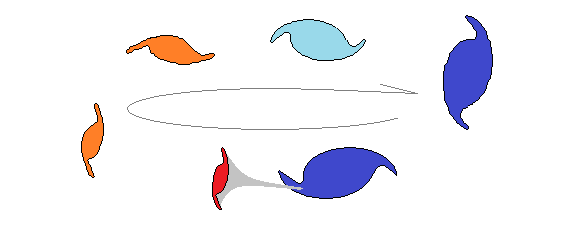Newton introduced several concepts into physics in order to label the various parts of his equations. He did so without giving any specifics as to their fundamental nature. The labels were all defined in terms of each other.
Some of the labels are easy to understand in terms of what we can actually see, others less so.
In the case of
Newton's second law of motion, Newton stated that force is mass times acceleration:
F = m*a
While acceleration is easy to picture and imagine, force and mass are not.
Mass is not matter, but
an attribute of matter that may refer to inertia or gravity, depending on context.
Force is an even more ambiguous term. It can mean anything from tension and pressure to something that does work.
By bundling the concept of work up with pressures and tension, all sorts of confusions can arise, so I like to restrict my use of the word force in much the same way I limit my use of the word mass.
Ideally, the word force should only be used when there is a transfer of energy from one object to another. In all other cases, pressure and tension should be used.
What would follow from such a labeling is that the magnetic, electrical and gravitational forces would be re-labeled as pressures, because none of these forces do any actual transferring of energy.
To illustrate this, we can take the case of a wood block laying on the floor.
If I pick the block up, it is I who transfer some of my energy to the block. Gravity is merely providing a low pressure environment.
When I put the block onto a shelf, I have given the block some of my energy. This energy is stored in the block.
If the block slides off the shelf, gravity pulls it to the floor. However, gravity does not add any energy to the block. The potential energy in the block is merely converted to kinetic energy.
It is only when the block hits the floor that energy is transferred from the block to its environment. The energy that I gave the block when I put it into its place in the shelf is transferred to the floor, mostly in the form of heat.
This same logic can be used to the magnetic force and electric force as well. They do not add or subtract energy in a system. The energy is always applied mechanically to the system, as explained in the chapter on
motors and generators.
In the case of inertial matter, we always start by applying pressure in order to change an object's energy. If we are unable to change its energy, pressure is all we provide. It is only when the inert body starts to accelerate that force is provided. This is in fact what the equation F = m*a states. Without acceleration, there is no force.
Big ship, big inertia
By Wmeinhart - Foto wurde mit einem Panoramaprogramm aus drei Fotos zusammengesetzt, CC BY-SA 3.0, https://commons.wikimedia.org/w/index.php?curid=124261
What should be noted is that if we apply force over time, for an accelerating body, and we express this mathematically, we end up with the formula for
kinetic energy.
If we apply force over distance inside a force field, we get
potential energy.
This is only true if the word force is used to mean Newton's second law of motion. As we have seen, tensions and pressures do not facilitate energy transfers. They do not do any work.
By restricting our use of the word force to Newton's second law of motion, we avoid a lot of confusion related to energy and energy transfers.
























